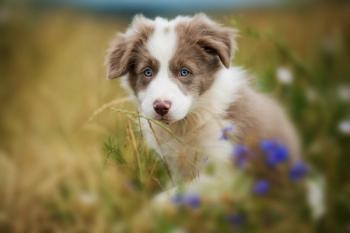
Flu scare could spur zoonotic research
Investigators may never confirm the source of H1N1, but the outbreak lead to more research dollars.
NATIONAL REPORT — Investigators may never confirm the source of the H1N1 outbreak of swine influenza, but the outbreak could serve as a wake-up call to veterinarians and legislators to be more vigilant about emerging zoonotic diseases.
Veterinary experts came out in full force after news broke of the H1N1 outbreak of swine influenza — a new strain combining swine, avian and human influenza viruses. They outbreak established veterinarians' role in keeping watch on animal diseases that jump species and become human problems, but Dr. Rodney "Butch" Baker, senior clinician in the Food Supply Veterinary Medicine Unit at Iowa State University's College of Veterinary Medicine and current president of the American Association of Swine Veterinarians (AASV), says the attention to the importance of veterinarians in battling zoonotic diseases isn't enough without financial backing for better surveillance and more food-supply veterinarians.
"We really don't know where this virus came from. There's been no federal dollars for a surveillance effort," Baker says. "What little money has been coming out of the national coffers has primarily gone to avian surveillance."
No official surveillance program exists for swine, but Baker says research centers and universities have been informally studying swine influenza samples for some time, though. They started going back and testing and re-testing old samples that had fallen by the wayside once Mexico started reporting the new H1N1 strain, Baker says.
Researchers at Iowa State believe the currently circulating swine H1 viruses are descendents from a common ancestor of one of the two viruses that reassorted to create the novel H1N1 strain which is now circulating in humans. They have not found the human virus in pigs, and the ones that are in pigs are only partially related, Baker says.
"We went back and looked for the genetic code of the new novel H1N1 and discovered that this human virus isn't present in our samples and the hemagglutinin gene is 10 percent different from those triple reassortment viruses circulating today," Baker explains. "The viruses observed in the field and sequenced here at Iowa State change at a rate of about 1 percent per year. Since there is on average 10 percent change in the code, it appears that one of the ancestors of this new virus has been out of U.S. pigs for about five to 10 years. We suspect it's been on another continent.
"You can guess that our triple assortment virus, somewhere maybe five to 10 years ago, reassorted with a virus of Asian or Eurasian origin and created this virus," he continues. "We'll probably never know how this virus was created, but we are almost certain it wasn't created in North America because we don't import pigs from Asia. But Asia imports pigs from North America."
Dr. Christopher Olsen, associate dean for academic affairs and public health professor at the University of Wisconsin-Madison School of Veterinary Medicine, specilializes in influenza studies and says that, while it's too early to know the virus' origin, labs worldwide are working to crack the genetic code. The current form of the virus could have been mixed within a pig, but also in humans or another species, he explains.
Pigs have for some time carried forms of the influenza virus, he explains. Four forms now are common in many herds, including the "classic" H1N1 virus, which pigs caught from people around 1919 following the Spanish influenza outbreak. No influenza was detected in pigs before that time, Baker adds.
Other strains present in today's swine include two triple reassortment H1N1 viruses, which Baker says are "distant cousins" of the new H1N1 strain. Finally, there is a human-like virus that pigs probably originally caught from humans that quickly adapted to swine. Baker says to this point, that particular virus has yet to be transferred from person to person and human cases are rare.
"These virus species adapt very quickly, but once they do, they are slow to jump back to another species," he says. "We would expect this current virus, if it does get into pigs, will adapt to the species very quickly. If you're a doomsday person, you'll think these viruses will all get together and some 'supervirus' will come from that. But historically, that's not the case."
One of the "silver linings" of this outbreak is that the virus may prove to be a valuable research tool, says Olsen, explaining it could help researchers identify the genetic markers that allow viruses to be transmitted from pigs to people and vice versa.
Another risk, however, is if the current H1N1 virus strain circulates among humans this fall and worsens, it will be more likely to enter swine herds. But by then, vaccines may have been created for both people and pigs.
Recent cases in one Canadian swine herd showed only 20 percent morbidity, meaning 80 percent of the herd either showed no clinical signs of infection with the virus or didn't get infected in the first place. No deaths were reported in that herd, Baker says. Additionally, the National Animal Disease Center in Ames, Iowa, recently tested the virus on pigs with no other forms of influenza and found that it presented no worse that any other influenza strain in pigs.
Increased risks
The problem for veterinarians is that movements by animal-welfare groups and a shortage of food-animal veterinarians could have negative implications for the future.
First, California already passed legislation governing how pregnant sows are housed, and several states are considering copycat laws. And as the movement toward free-range and organic animal agriculture grows, Baker says swine could be put at greater risk for diseases.
"It would be the worst thing that could happen to our industry," he says, adding that many swine diseases farmers struggled with when they used outdoor production, such as brucellosis, have been eradicated since swine were moved indoors. "It's not about welfare. It's about putting animal agriculture out of business. And I can tell you our pig producers in the United States have the best biosecurity system in the world, bar none."
Moving swine outdoors will put them at greater risk of diseases like influenza, which originated in birds, Baker says. Indoor production helps limit swine contact with wild species that spread diseases globally.
Couple outdoor production with a shortage of food-animal veterinarians to recognize early signs of new diseases, and the result could be devastating for the swine industry, he says. Already, higher feed prices over the last two years were making swine producers lose about $20 per hog. The swine flu scare has increased that loss to about $30 per hog.
"There's a depression," he says, referring to swine producers. "Some of them are poised to lose their farms that have been in their families for decades."
And with 75 percent of all human infectious diseases having a zoonotic base, Baker says food-animal producers are an easy target for blame.
"We've been criticized for not having enough surveillance for swine-flu viruses, but there's no money to do it," he says. "How can you have a surveillance program without dollars to run the tests or pay people to run the tests?"
Dr. Laura Banks, a DVM with a master's degree in public health and director of the University of New Mexico Center for Disaster Medicine, says disease outbreaks like the current H1N1 strain emphasize how much the American Veterinary Medical Assocation's One Health concept is needed. And not just among food-animal industries. Companion-animal veterinarians also are fielding questions from pet owners curious about how emerging diseases will affect them and their pets.
"We need to make sure veterinarians are knowledgeable about the human side of zoonotic diseases and make sure they can communicate about human symptoms. Sometimes we don't feel comfortable doing that," she says. "But I think we have an obligation to answer questions. It's no longer an option for us to say 'it's not my job to talk about human health.' We need to be diligent about giving accurate information."
"This is a great time for veterinarians to remember their public health role and to realize they can be an incredible source of information for the public," Olsen adds.
Newsletter
From exam room tips to practice management insights, get trusted veterinary news delivered straight to your inbox—subscribe to dvm360.




